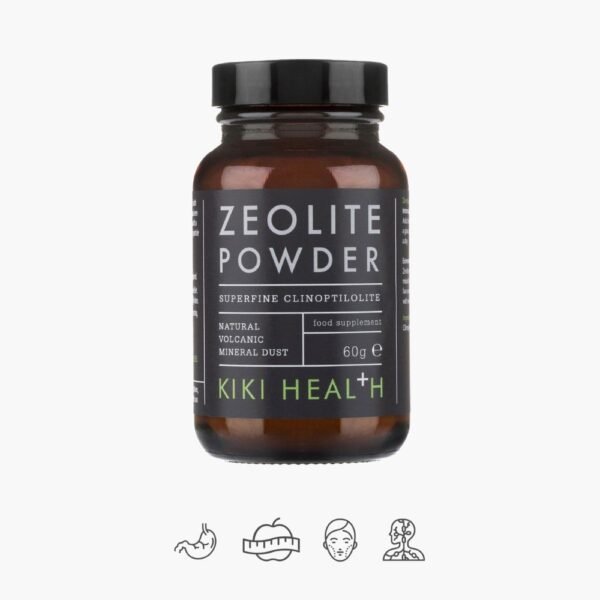Breathing is an essential life function without which we cannot exist. But have you ever thought about how we breathe and what it can mean for our health and well-being? In this article, we will share with you our knowledge about the art of breathing, its importance and practical ways to improve this important function of life. So, we invite you to join us in this interesting and useful topic.
Breathing is a vital process because it supplies us with the oxygen we need and removes carbon dioxide from the body. However, most people do not breathe properly or inefficiently, so their body does not receive the optimal amount of oxygen. This can lead to various health problems such as: stress, anxiety, reduced physical capacity, etc. That's why it's important to learn how to breathe correctly and apply these principles in your daily life.
The science of breathing and the practice of effective methods
Although breathing is a natural process, most people ignore certain aspects of it that can have a significant impact on their health. Breath science studies these aspects and provides recommendations on how to improve them. It includes both breathing techniques and their practical application. Here are some interesting facts about breathing that you should know:
- Breathing is the only process of the autonomic nervous system that we can consciously control. This means that breathing is the bridge between the conscious and the subconscious, between our body and our mind.
- The frequency of breathing is directly related to our emotional states: the faster the breathing, the greater the stress and anxiety; the slower our breathing, the more calm and relaxed we are.
- Breathing can be used as a tool to gauge the body's energy levels. The One Minute Test is a great way to do this and track your progress.

Assessment of body vitality using the one-minute test
The one-minute test is a simple and quick way to assess your body's energy level. Here's how it works:
- Relax.
- Inhale normally through your nose and exhale normally through your nose.
- Close your nostrils and hold your breath.
- Count the seconds until you feel the FIRST distinct urge to breathe or the first stress when your body urges you to breathe (don't push your body to the absolute limit of holding your breath - only to the first real urge to breathe).
- Then release and start breathing normally again.
Your breathing should be normal and calm. (If you're breathing hard, you've held your breath too long). How many seconds did you manage to hold your breath?
Here's the most important thing:
A healthy, vibrant, energetic body should be able to hold its breath for at least 40 seconds. If you passed LESS THAN 25 SECONDS, it indicates disturbed breathing and poor body health (low energy/vitality).
This test can help you understand how your body reacts to different situations and help you learn to control your energy through your breathing.

Reengineering the nervous system to reduce stress and anxiety
Breathing is one of the main ways we can activate our nervous system and reduce stress and anxiety. Here are some practical tips on how to do this:
- Practice diaphragmatic breathing. Diaphragmatic breathing is breathing in which the abdominal area expands on inhalation and contracts on exhalation. It helps reduce stress by allowing us to take in more oxygen and reduces pressure in the chest area.
- Use pranayama techniques. Pranayama is a system of yogic breathing techniques that help control and manage energy through the breath. There are different pranayama techniques for different purposes, such as relaxation, increasing energy or balancing emotions.
- Incorporate meditation into your life. Meditation is a great tool to help reduce stress and anxiety by allowing us to relax and focus on the process of inhaling and exhaling.
So if you're looking to reduce stress and improve your emotional health, breathing can be an important tool for you.
Why Difficulty Breathing Is a Common Cause of Brain Fog and Mood Disorders and How to Improve Blood Flow to the Brain While Breathing
Difficulty breathing is common brain fog and cause of mood disorders. Brain fog affects the part of the brain responsible for emotions and reactions to stress. When the breathing process is disturbed, the blood supply to the brain can also be disturbed, which can cause brain dysfunction.
How can we improve blood flow to the brain during breathing and ensure that our breathing process is efficient? The main method is correct breathing. So, if you want to ensure optimal blood supply to the brain and avoid brain dysfunction, it is worth learning to breathe correctly and apply the practices in your daily life.

Improving physical capacity and endurance through breathing techniques
Breathing techniques can also help improve physical performance and endurance. This is especially important for those who do sports or want to improve their physical condition. By using the correct breathing techniques, you can increase your oxygen uptake and improve your cardiovascular system.
One of the most popular breathing techniques is the Wim Hof method. This method is based on the principles of deep breathing, meditation and exposure to cold. It can help you improve your fitness, increase your energy levels and reduce stress.
How to supplement the body to breathe more calmly
In addition to effective breathing techniques, you can also strengthen your respiratory system by supplementing your body with essential nutrients. Nutrients that help maintain body balance and optimize lung function, ensuring your body gets the most out of every breath. By including these supplements in your daily routine, you can experience a remarkable change in your overall health and vitality.
The myth of deep breathing
There are many myths about breathing, especially about deep breathing. Many people believe that deep breathing is the best way to achieve optimal oxygen levels. However, this is not entirely correct.
It is vital to understand that breathing too deeply can cause you to take in too much oxygen and reduce carbon dioxide levels in your body. It can cause dizziness, nausea and even loss of consciousness. Also, too much oxygen can cause oxidative stress and damage the body's cells.
So, instead of focusing on deep breathing, we must aim for correct breathing that meets our body's requirements and ensures optimal oxygenation.

Practical ways to learn breathing techniques
How can we learn breathing techniques and incorporate them into our daily lives? Here are some tips on how to do it:
- Practice diaphragmatic breathing. You can do this at any time of the day, while increasing your energy levels and reducing stress.
- Add meditation to your daily morning ritual. Meditation helps reduce stress and improve emotional management.
- Learn various breathing techniques from experienced practitioners or guides. These could be yoga teachers, breathing therapists, or even online courses.
- Try to incorporate breathing techniques into your daily life. This can be during exercise, walking or even while working
- When the situation arises, you get excited or tense. Focus on your body and observe it. You will see and recognize how the body reacts and you will naturally want to help yourself by restoring the breath.
How to improve health by increasing oxygen supply to cells
We all know that breathing is vital to our lives, but we often overlook our breathing habits and the ability to improve them. In this tutorial, I want to share some science-based tips on how to improve your health by increasing oxygenation to your cells.
First, it is important to understand that optimal breathing is the source of vitality. This vitality depends on many factors, including blood oxygen levels, cellular function, and the nervous system. The better our body can use oxygen, the more efficiently it can produce energy, which helps improve physical fitness, reduce stress, and increase overall health.
In order to improve the oxygen supply to the cells, it is important to breathe properly. Many people breathe too shallowly or too deeply, which can cause additional stress on the body and lower energy levels. Proper breathing involves slow, deep and controlled breathing using the diaphragm and chest muscles.

4 Keys to Optimal Breathing (And How to Train Your Brain to Do It Automatically)
Optimal breathing is a learning experience that can improve our quality of life and help us stay healthy. In order to master this skill, you need to pay attention to four main aspects of breathing:
- Breathing rate: The optimal breathing rate is about 8-10 times per minute. Breathe slowly and deeply (naturally relaxed) so the body can use oxygen more efficiently.
- Breathing depth: the optimal breathing depth is intermediate between shallow and deep breathing. Try to breathe through your diaphragm, not just your chest muscles, to better oxygenate your blood.
- Breathing Rhythm: The optimal breathing rhythm is even and consistent. Try to maintain this rhythm throughout the day to reduce stress and improve energy levels.
- Breathing habits: Training the brain to automatically breathe optimally requires regular practice. Start by paying attention to your breathing throughout the day and try to improve it.
Conscious breathing
Breathing is a meditative tool that allows us to become more aware of our body and mind and helps reduce stress and anxiety. Here's how you can incorporate the popular technique into your daily life:
- Set a certain time in the day when you can spare a few minutes. This can be in the morning, before bed, or any other time you feel you need to relax.
- Sit or lie down in a comfortable position and close your eyes. Start breathing deeply and slowly, inhaling through your nose and exhaling through your mouth. Try to focus on your breathing, listen to the sounds of your breath and feel how your body moves with each breath.
- If your thoughts start to wander, just pay attention to your breathing and try to get rid of them. Repeat this practice regularly so that you can learn to relax and reduce stress even in difficult situations.
This breathing can also be useful for improving the quality of sleep. Do this practice before you go to bed to help you relax and let go of the tension that may be preventing you from falling asleep. It can help you get a deeper and more restful rest, giving you fresh energy in the morning.

Why breathing practice is often the mysterious key to deeper sleep than in childhood
Good sleep is important for our physical and psychological well-being. However, many people experience sleep problems, including difficulty falling asleep, waking up too often during the night, or poor quality sleep in general. Breathing practice may be the secret key to deeper sleep than when you were a child.
Breathing practices help us relax and reduce stress. In addition, breathing practices improve the supply of oxygen in the blood and help our bodies use it more efficiently, increasing energy levels and improving overall health. It can also help reduce breathing problems such as obstructive sleep apnea.
Because breathing practices help reduce stress and improve sleep quality, it can be beneficial for those who suffer from anxiety disorders or stress. By repeating the breathing practice regularly, you can learn to relax and reduce stress, helping you to rest more deeply and peacefully.
Conclusions: The power of breath for overall well-being
Breathing practice is a powerful tool that can help improve our quality of life and health. By breathing properly, you can increase the oxygen supply to the cells, reduce stress and improve the quality of sleep. You can also use breathing exercises to increase your energy levels and improve your physical condition.
When practicing breathing exercises, it is important to pay attention to the frequency, depth, rhythm and habits of breathing. Additionally, you can incorporate mindfulness breathing into your daily life to reduce stress and improve your mental health.
By tracking your progress and maintaining consistency, you can get the most out of your breathing practice. Through simple tests and regular breathing exercises, you can learn to automate your breathing and reduce stress, giving you fresh energy and improving your overall health.











